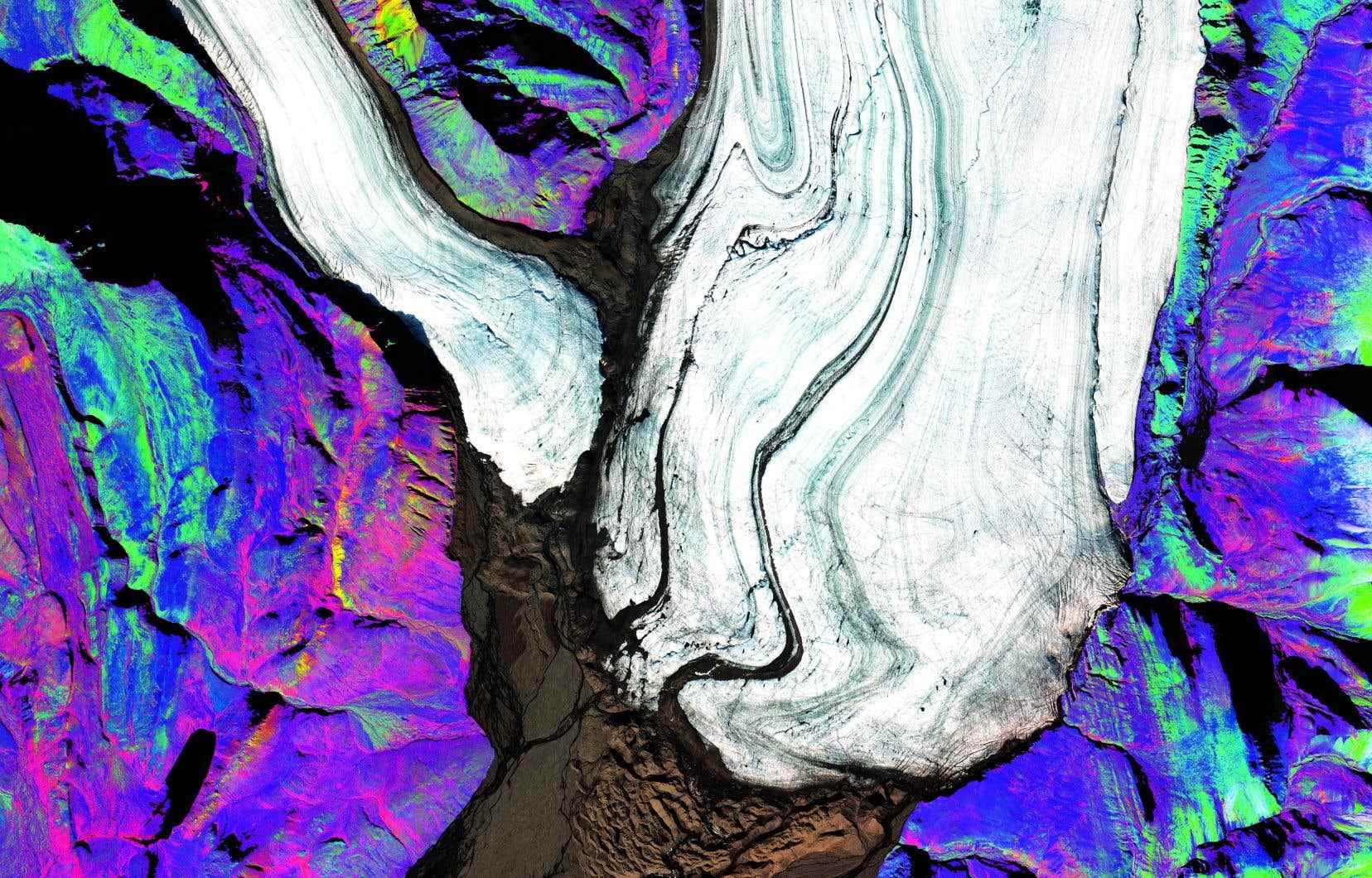This text is part of the special section Les prix de l’Acfas
Since 2010, the competition The proof by the image rewards captivating photos resulting from research, and this, in all fields of science. In addition to the image that made our front page, and which won one of the Jury Prizes, we publish here the other three images that caught the attention of the jury in 2022.
Mars takes its hat off to the Arctic
Eloise Brassard (University of Sherbrooke). Audience award Discovery and audience award.
These glaciers surrounded by false color rock formations are located on Axel Heiberg Island in Nunavut. Note the orange-yellow areas, these are “gossans”. These surface deposits, rich in oxidized iron, testify to an acidic environment, conducive to the establishment of certain forms of life. There is also a mineral whose crystalline structure can retain traces of life: jarosite, a biomarker found on the planet Mars! Based on ground analyses, the researcher is exploring a method to locate these hats on satellite images of the Canadian Arctic; knowledge that will be applied to satellite images of the red planet.
Green slope in peat bogs
Charles Picard-Krashevski (University of Montreal). Audience award.
This bog nestled in Parc national du Mont-Tremblant is the subject of a floristic inventory in order to assess the impacts of climate change. To do this, botanists identify all plant and shrub species at different spatial scales in a 400 m plot, a tedious task requiring around three hours of work. However, starting from images captured by a drone, and thanks to the analysis by artificial intelligence, 20 minutes would be enough for a quadrat of 1 m (the three squares on the image). The identification would therefore be automated after training the model to recognize all the plants. The botanist would then supervise his “machine” colleague by validating his results.
This charge that doesn’t say a word
Karine Bilodeau (Laval University). Audience award.
“My work begins, it never stops. These are the words of this teacher working on her corrections one Saturday morning when her children were playing around her, fragmenting her attention. This image is part of a thesis focusing on the relationship to work of preschool and primary school teachers. We observe here the normalization of the dumping of a large part of the tasks in other spheres of life, well before the arrival of teleworking brought about by the pandemic. This invisible work is camouflaged among the obligations of daily life, making the border between personal and professional life permeable.
This special content was produced by the Special Publications team of the To have to, pertaining to marketing. The drafting of To have to did not take part.
